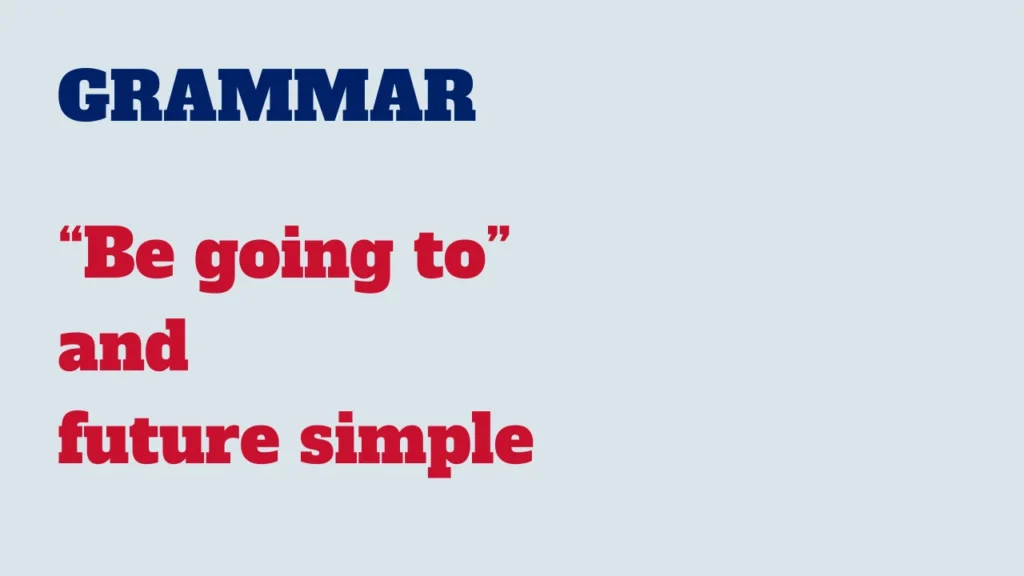“Be going to” and the future simple tense are both used to express future actions, but they have different structures and nuances.

“Be going to” for future intentions:
Structure:
[Subject] + “am/are/is” + ” going to” + [base form of the verb]
Examples:
I am going to meet my friends later.
They are going to start a new project.
Usage:
Used to express intentions, plans, or predictions based on present evidence.
Example:
Look at those clouds. It’s going to rain.
Future simple tense ”will”:
Structure:
[Subject] + “will” + [base form of the verb]
Examples:
She will travel to Paris next month.
We will help you with the move.
Usage:
Used for general predictions, promises, offers, or decisions made at the moment of speaking.
Example:
I will call you later.
Table: Be going to and future simple
| Subject | Be going to affirmative | Future Simple (”will”) affirmative |
|---|---|---|
| I | I am going to eat dinner. | I will eat dinner. |
| You | You are going to visit. | You will visit. |
| He/She/It | He/She/It is going to study. | He/She/It will study. |
| We | We are going to travel. | We will travel. |
| You (plural) | You are going to learn. | You will learn. |
| They | They are going to play. | They will play. |
Comparison:
Both (future simple and “be going to) can be used for predictions about the future, but “be going to” often implies a pre-made plan or intention, while the future simple tense with ”will” is more general and spontaneous.
Common mistakes to avoid:
Incorrect: I will going to go to the store.
Correct: I am going to go to the store. (Use either “will” or “going to,” not both.)
Incorrect: They are going to will visit us next week.
Correct: They are going to visit us next week. (Choose either “going to” or “will.”)
Understanding when to use “be going to” and the future simple tense allows for more precise communication about future actions. Practice using both structures in various contexts to strengthen your language skills. Happy learning!



